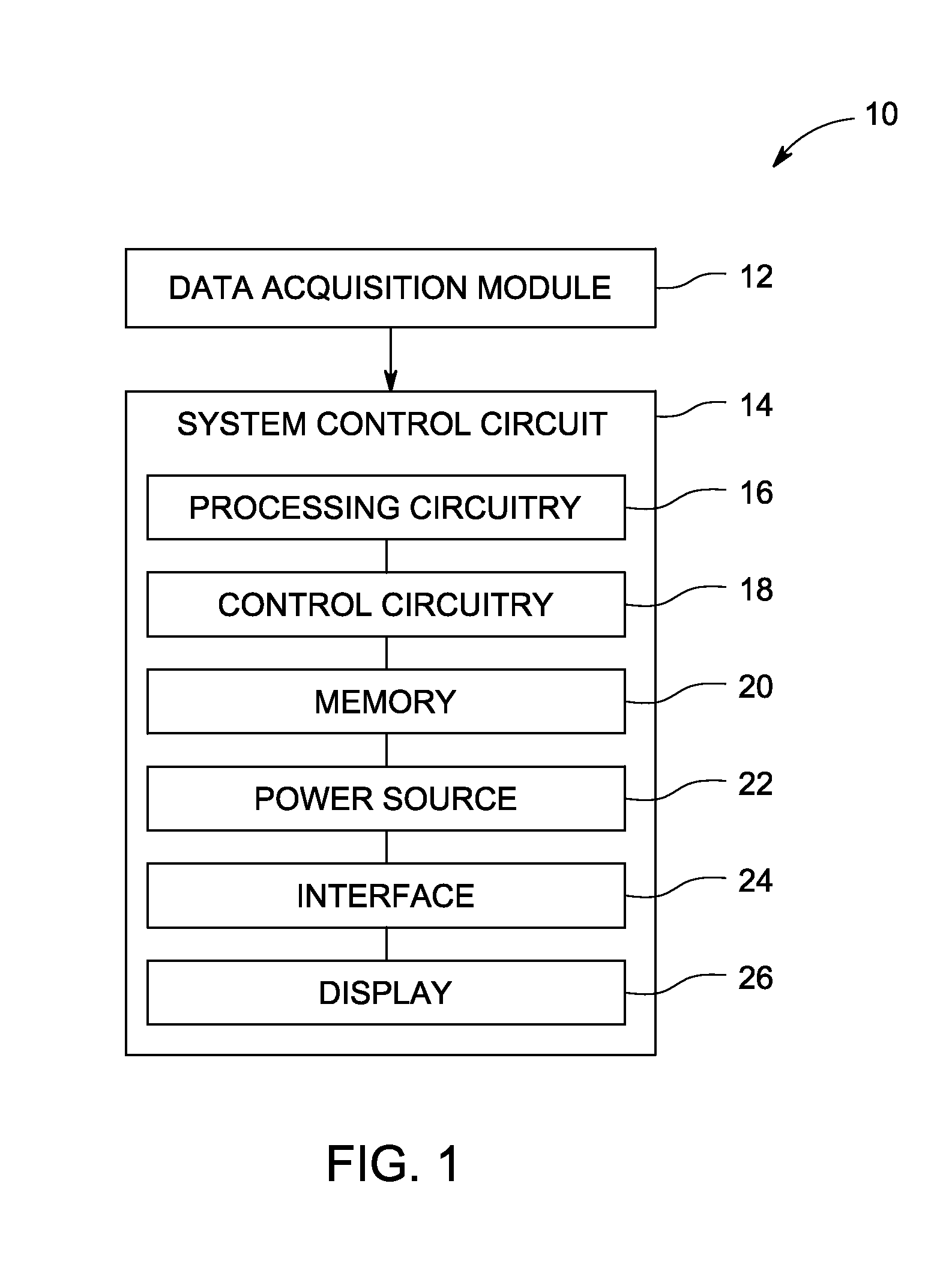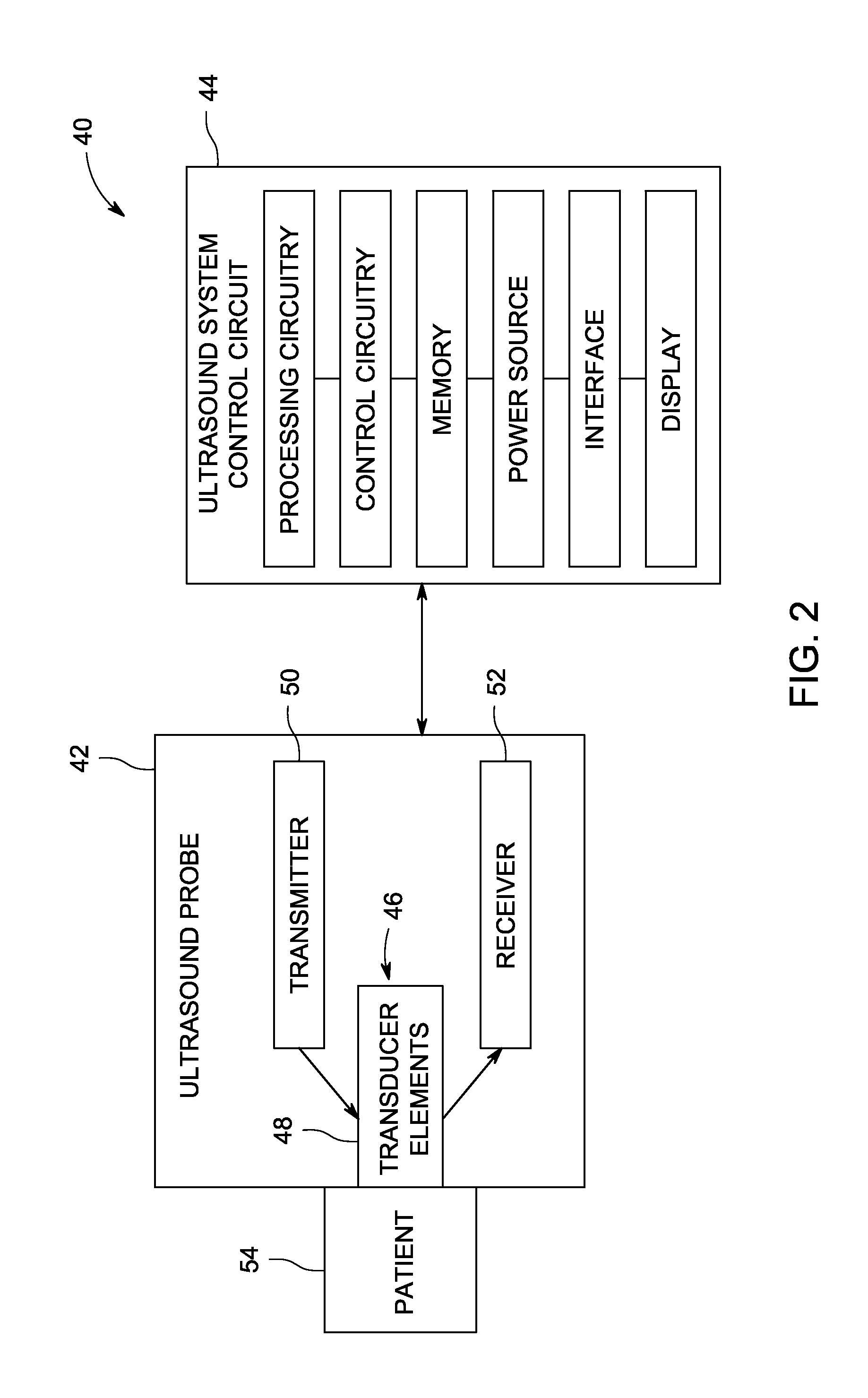Systems and methods for nonlinear elastography
a nonlinear elastography and system technology, applied in the field of elastography, can solve the problems of poor differentiation between tissues of different modulus, unrealistic or inappropriate, poor detection of small abnormalities,
- Summary
- Abstract
- Description
- Claims
- Application Information
AI Technical Summary
Benefits of technology
Problems solved by technology
Method used
Image
Examples
Embodiment Construction
[0018]Inhomogeneous materials have regions of relatively different mechanical properties, such as regions of relatively different stiffness. Described herein are embodiments of elastography systems and methods that may generally provide information about the stiffness, or modulus, of a material. Furthermore, in certain embodiments, the described systems and methods may generate modulus maps of the material, which may aid in identifying variations or abnormalities located within a volume of the material. In the medical field, such systems and methods may be particularly useful in identifying variations within soft tissue, such as tumors or diseased tissue. For example, a region of normal soft tissue may have a relatively low stiffness, while a tumorous region may have a relatively high stiffness. As described in more detail below, application of a nonlinear transfer function to displacement field data and / or map (e.g., a strain map) may provide modulus information and allow for the g...
PUM
 Login to View More
Login to View More Abstract
Description
Claims
Application Information
 Login to View More
Login to View More - R&D
- Intellectual Property
- Life Sciences
- Materials
- Tech Scout
- Unparalleled Data Quality
- Higher Quality Content
- 60% Fewer Hallucinations
Browse by: Latest US Patents, China's latest patents, Technical Efficacy Thesaurus, Application Domain, Technology Topic, Popular Technical Reports.
© 2025 PatSnap. All rights reserved.Legal|Privacy policy|Modern Slavery Act Transparency Statement|Sitemap|About US| Contact US: help@patsnap.com



